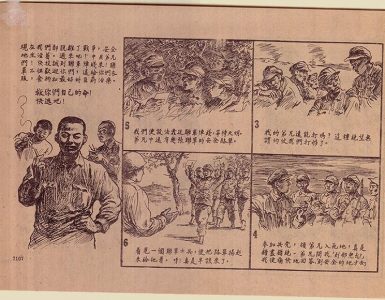Voted the Oxford Dictionaries’ international word of 2016, so-called “post-truth” refers to an apparently new concept.
The compound word relates to all those circumstances in which objective facts are less influential in shaping public opinion than news stories based on emotion or personal belief.
After its first appearances in 2015 in a number of articles, in 2016 the term “post-truth” became disconnected from its original definition and became widely used in political comment, especially with regard to the Brexit referendum and the U.S. Presidential election. In Italy the term has often been used in commenting on the outcome of the constitutional referendum.
In simple terms, according to many commentators, the UK’s exit from the European Union, the election of Trump and the failure of Renzi’s referendum proposal are the direct consequence of an era in which voters opt not to believe in objective facts but rather in emotionally charged news stories. Naturally it is not possible to assess how consciously this decision is taken by voters, but it seems obvious that the debate on post-truth also and perhaps mainly refers to those who are unable to distinguish between reliable sources of information and those which are manifestly biased.
As is entirely predictable, at the heart of this alarming situation countless observations can be found on the role of social media as the main vehicle of this uncontrolled spread of fake news and propaganda. Although news is posted and shared by users, the role these platforms play is much more active than might be imagined. On Facebook, for example, the “Trending Topics feed” column actively encourages the reading and sharing of the most popular articles on the social network, many of which come from unreliable websites full of glaringly fake news, the importance of which is exaggerated in this way.
Buzzfeed magazine uncovered the prime case of certain (more than 100) pro-Trump websites, which had been created by numbers of Macedonian teens and which reported sensationalist and totally fictitious news with the single declared aim of making money through Google’s online Ad-sense advertising network. One example is of the baseless smear campaign against Hillary Clinton which helped generate over 140,000 shares (reactions and comments) by U.S.users (on Facebook).
Facebook’s management were faced with a torrent of rage and criticism in the wake of Trump’s victory, being accused of not admitting their responsibility in shaping public opinion. In response to this criticism, on the 15th of December 2016, Mark Zuckerberg announced the launch of an article classification system, which will begin flagging news stories reported as fake by users, which will then be sent to (five) third-party outside professional fact-checking organisations for verification.
However, there are many who do not want to leave the power to distinguish real news from fake news to the major Internet platforms, the so-called Over The Top (OTT) players. Both commentators and experts have underlined the danger of leaving private companies in charge of assessing the accuracy of web-based information.
Speaking of which, the Financial Times interview with Giovanni Pitruzzella, head of the Italian Antitrust, published on the 30th December 2016, attracted particular attention. In the interview, Pitruzzella underlines the need to set up “a network of independent national bodies in charge of identifying and removing fake news from circulation (and imposing fines if necessary)”. A sort of Authority tasked with monitoring the truthfulness of information.
The idea has sparked a certain interest among commentators but also a chorus of accusations in relation to the presumed intention on the part of the Institutions to impose censorship. In Italy the former comedian and political leader Beppe Grillo has defined the post-truth alarm as “a new inquisition”. There are also those, such as Riccardo Luna, the former editor of Wired Italia, who asks for a rethink of quality journalism’s commitment as a bastion to combat widespread misinformation, stressing that although post-truth is not a new phenomenon, it is hugely amplified nowadays by the web and social networks.
However, this prompts us to make a further consideration. If it is true that the web has increased chances of running into fake news, it must also be acknowledged that the wide variety of information sources allows us more than ever today, to study news items in depth and to analyse and compare them. It goes without saying that a certain degree of skill to discriminate is necessary, but it is only in the context of a multiplicity of voices that it becomes possible to develop helpful cognitive instruments for distinguishing between relatively realistic news and sensational hoaxes. Therefore, in addition to being difficult to apply, devising solutions to limit and control information (contained in news) might also be counterproductive.
Yet there are still only very few voices which underline the need to help present and future voters in providing themselves with those intellectual instruments which would enable them to recognise the most reliable sources by themselves. So, regardless of any effective practical solutions (there may be), the mere fact of discussing post-truth publicly may represent a first step towards awareness of a global issue each one of us can give our personal contribution to limiting in a very simple way: namely, by avoiding sharing unverified news.











Add comment